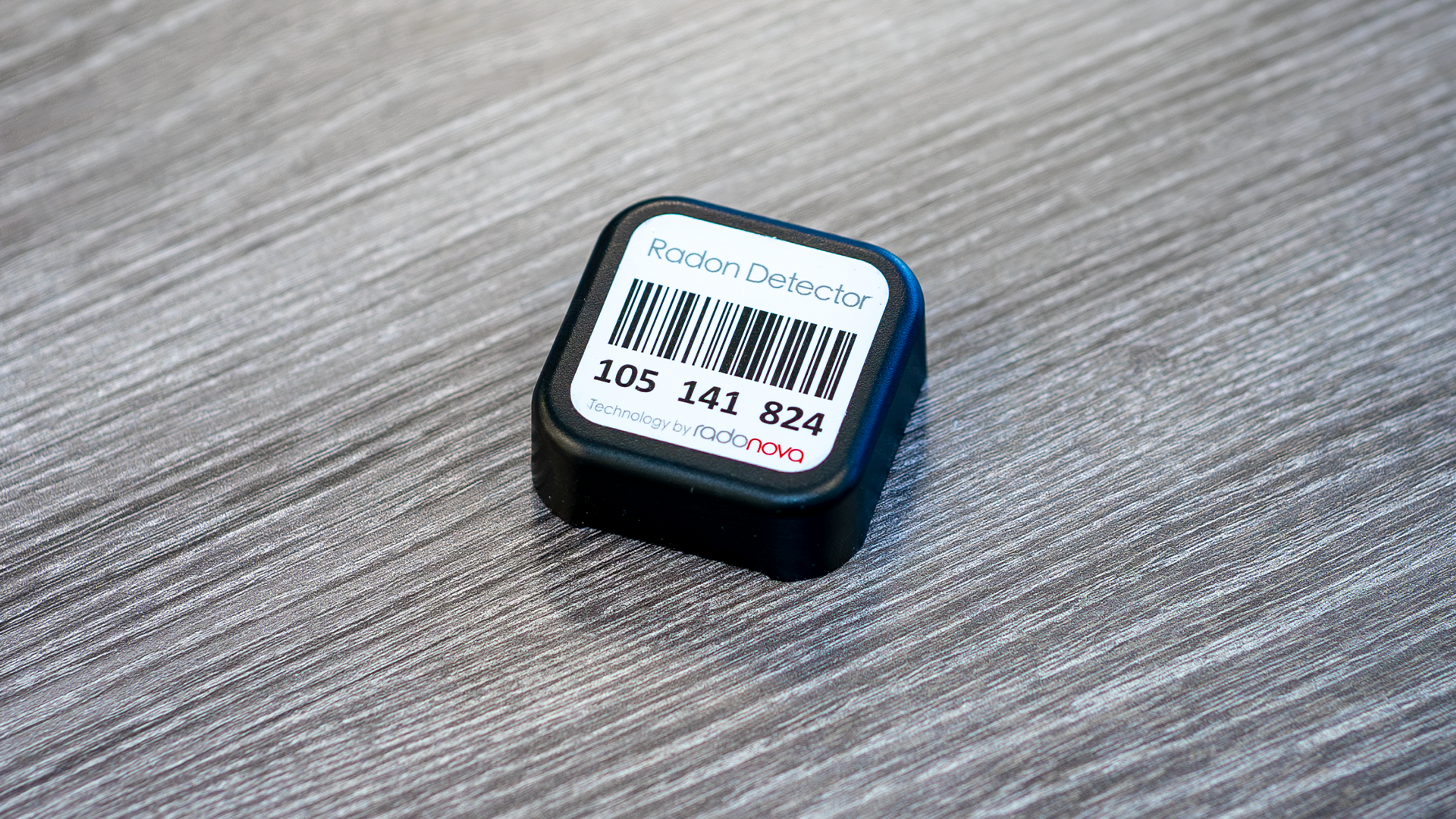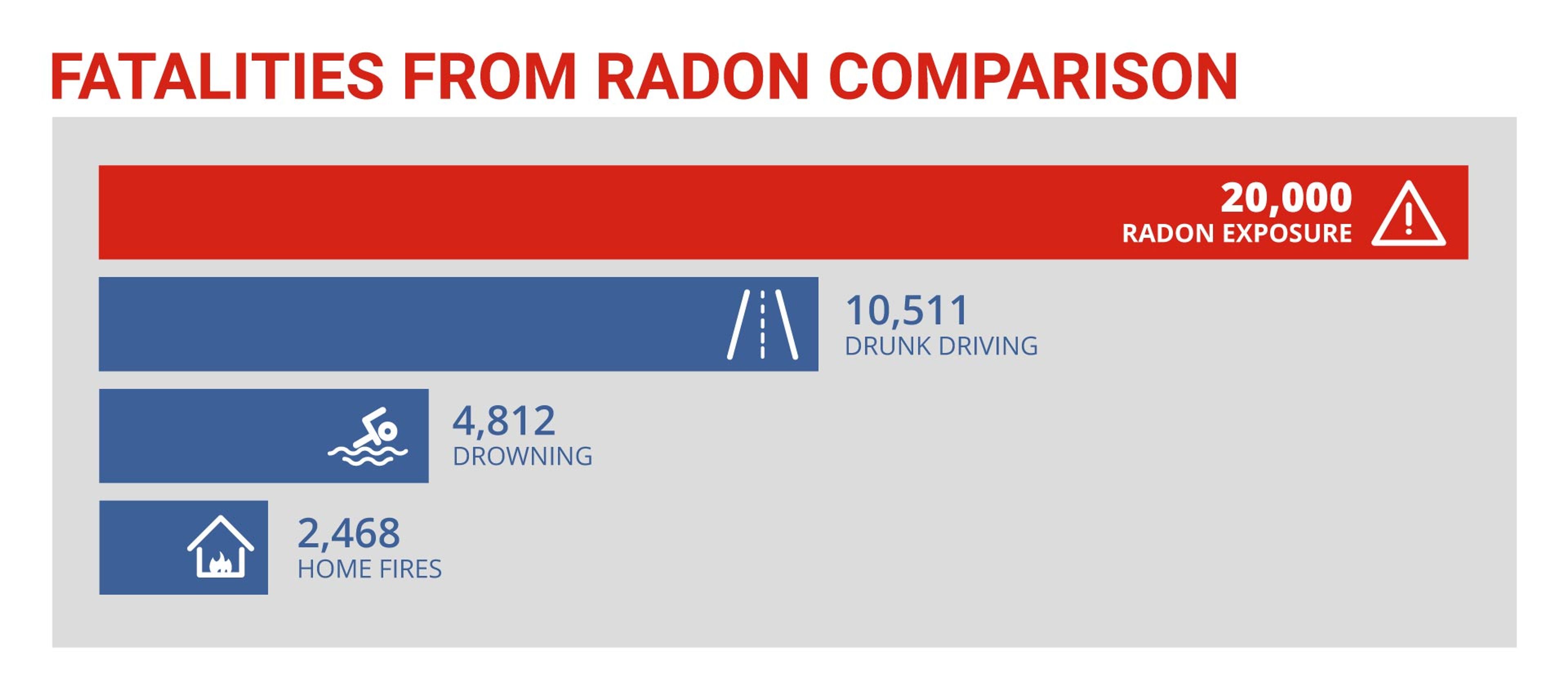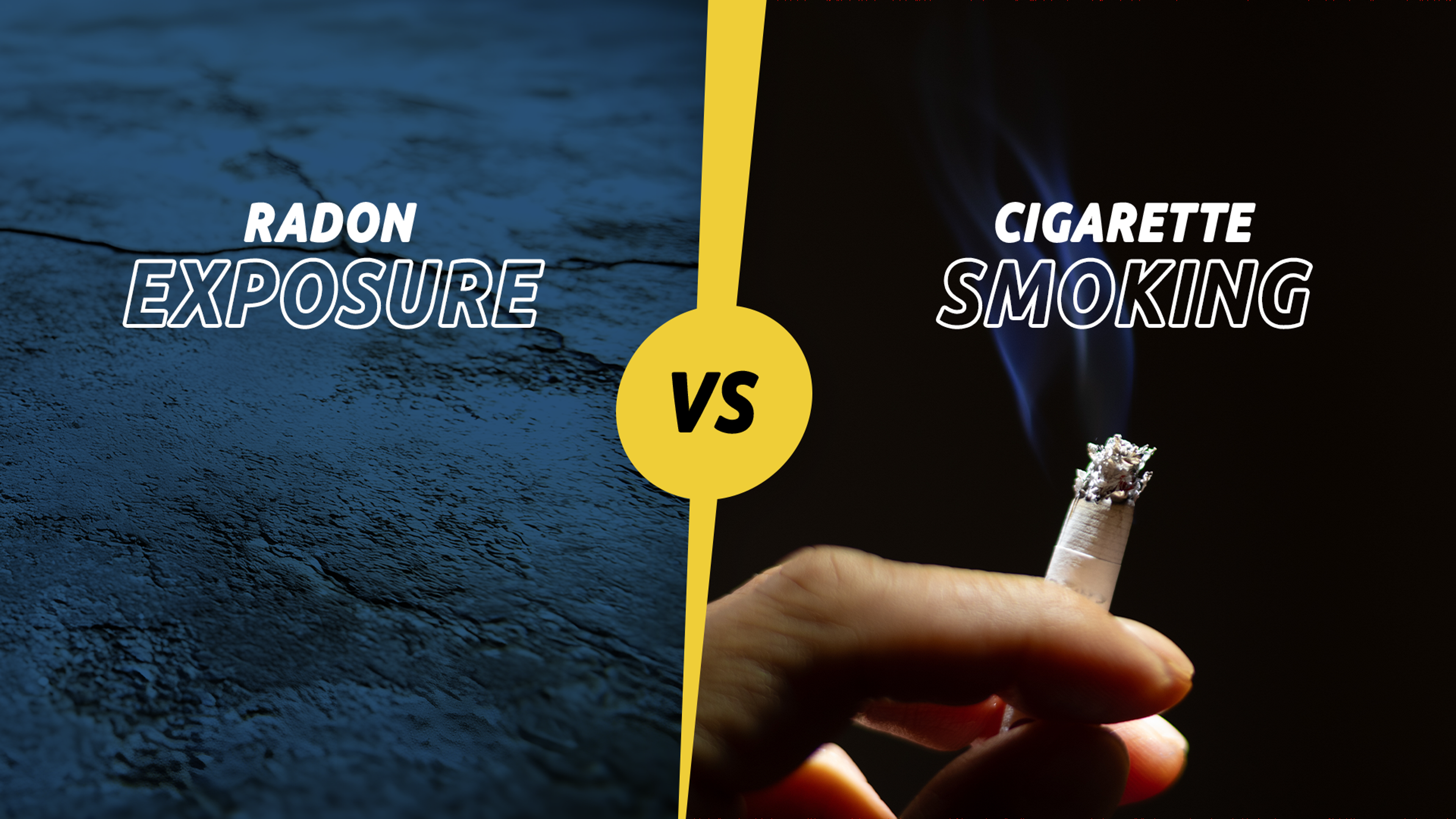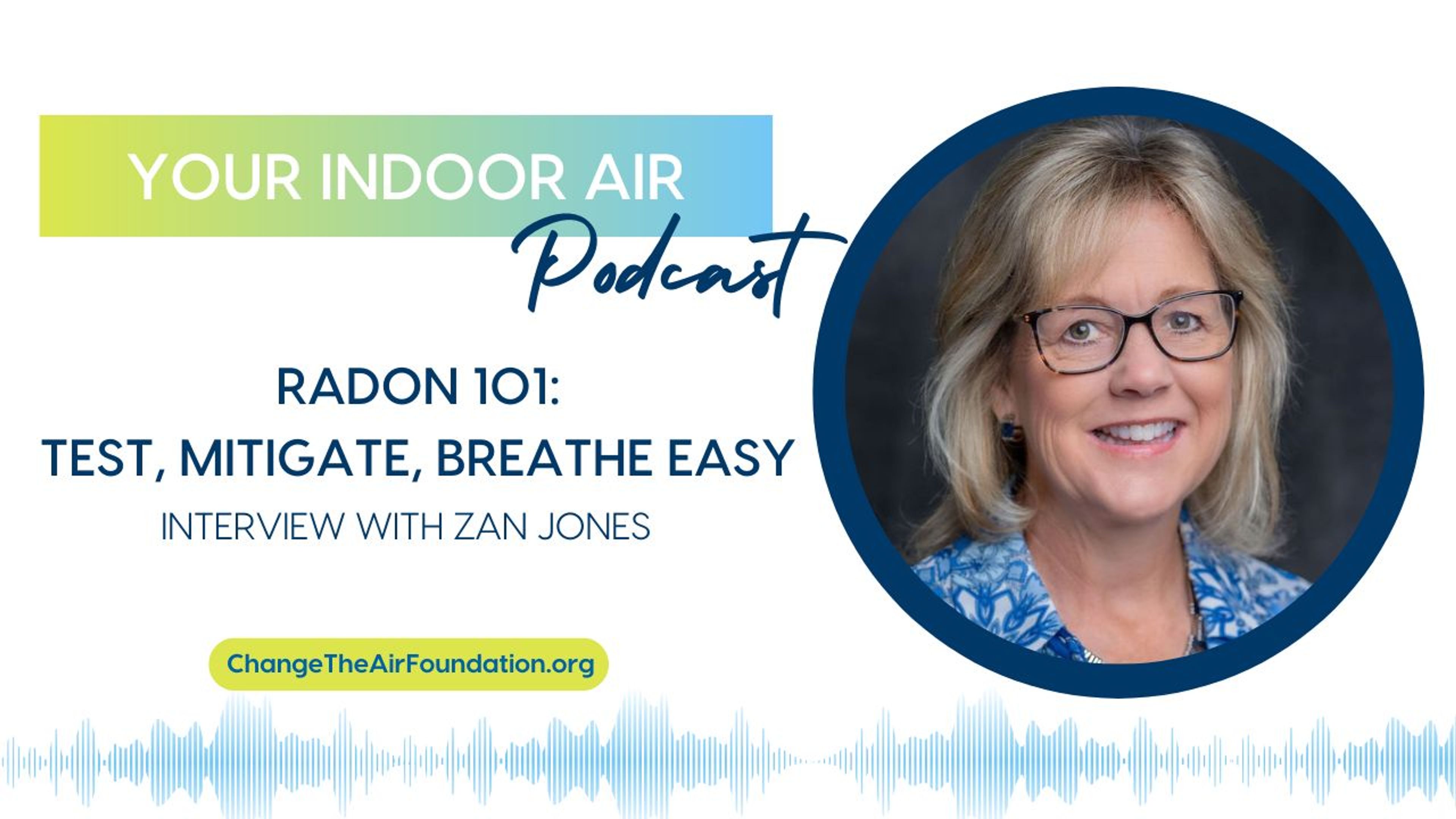

How dangerous is radon?
What are the health risks of radon?
Radon gas constitutes the second leading cause of lung cancer in the United States.¹ With the lowest survival rate among cancers, the Environmental Protection Agency estimates that 21,000 people die from radon-induced lung cancer per year.² In 2005, the Surgeon General of the United States issued a national health advisory on radon.³ Yet, many people are still asking themselves, "What is radon testing?" If you're still in the dark about what is a radon test, start by exploring the dangers of this invisible gas.
How is radon dangerous in your home?
Radon doesn't cause itchy eyes or watering noses, but it can cause lung damage over time. Long-term exposure to high radon levels increases the likelihood of developing lung cancer. Risk of leukemia also rises with exposure to radon.⁴ Children may be at a higher risk for radon exposure according to some recent studies.⁵
What variables impact how dangerous radon is?
Radon is a particularly tricky risk factor to control because the levels in your home can change daily. Seasonal variations and changes in weather are just a few variable that can impact indoor radon levels. For this reason, both long-term and short-term testing is recommended. Some of Radonova's tests measure radon gas levels for up to a full year. This provides an annual average and takes into account how radon fluctuates over the seasons.
Where does radon come from?
Ground soil contains radioactive elements that make up common minerals and rocks found in the soil across the country. Radon gas is released as part of uranium's natural decay process. This radioactive gas may enter the average home through cracks in the foundations, gaps in the first floor and basement walls, and other similar openings. Radon may build up inside the home and reach unsafe levels.
Why don't I hear more about the dangers of radon?
Despite being a major risk factor for lung cancer, radon awareness education from the EPA and state health organizations is limited.² Although many people are unaware of the dangers of radon gas, radon education and awareness is only getting better as more people test. By educating yourself on the potential dangers of radon and taking precautionary measures with radon testing and mitigation, you will ensure the safety of yourself and your loved ones against radioactive gas in your home.
What is considered a dangerous radon level in your home?
The EPA sets the level of unsafe radon gas exposure at or above 4 pCi/L.² If your home has radon gas levels exceeding this action level, it’s recommended that you undergo mitigation efforts to reduce exposure. If testing reveals a much higher level, you’ll definitely need mitigation systems to remediate the radon gas.While any level of radon can have an effect, the EPA says readings below 2 pCi/L is considered normal and only carries a relatively small increased risk of lung cancer.³ It is possible, but often difficult, to reduce radon gas below these levels.
How Dangerous is Radon: Frequently Asked Questions
With most homeowners knowing relatively little about radon gas and its risks, there’s plenty to learn before tackling the problem. Understanding the scope of radon exposure, the parts of the country with the highest levels of gas production, and mitigation costs will prepare you for taking on the challenge.
Sources:
- “Protect Yourself and Your Family from Radon.” Centers for Disease Control and Prevention, Centers for Disease Control and Prevention, 8 Jan. 2020, www.cdc.gov/nceh/features/protect-home-radon/index.html.
- A Citizen’s Guide to Radon The Guide to Protecting Yourself and Your Family from Radon. United States Environmental Protection Agency , Dec. 2016, www.epa.gov/sites/production/files/2016-12/documents/2016_a_citizens_guide_to_radon.pdf.
- “Health Risk of Radon.” EPA, Environmental Protection Agency, 24 July 2019, www.epa.gov/radon/health-risk-radon.
- “Radon and Cancer.” National Cancer Institute, www.cancer.gov/about-cancer/causes-prevention/risk/substances/radon/radon-fact-sheet#:~:text=How does radon cause cancer?,be associated with inhaling radon.
- “Environmental Health and Medicine Education.” Centers for Disease Control and Prevention, Centers for Disease Control and Prevention, www.atsdr.cdc.gov/csem/csem.asp?csem=8&po=7#:~:text=Children and Radon Exposure Risk,faster than those of adults
- “Consumer Protection.” National Radon Safety Board, 28 Aug. 2018, www.nrsb.org/for-consumers/consumer-protection/.
- “Types of Certification.” NRPP, 16 Jan. 2020, nrpp.info/certification/types-of-certification/.
- Home Buyer’s and Seller’s Guide to Radon. United States Environmental Protection Agency , Mar. 2018, www.epa.gov/sites/production/files/2015-05/documents/hmbuygud.pdf.
- “Radon and Cancer.” American Cancer Society, www.cancer.org/cancer/cancer-causes/radiation-exposure/radon.html.
- (Fatalities From Radon Comparison Chart) Environmental Protection Agency: Health Risk of Radon, US Department of Transportation: National Center for Statistics and Analysis, World Health Organization: Global Report on Drowning, US Fire Administration: Home Fire Fatalities in the News
Published
May 05, 2023




